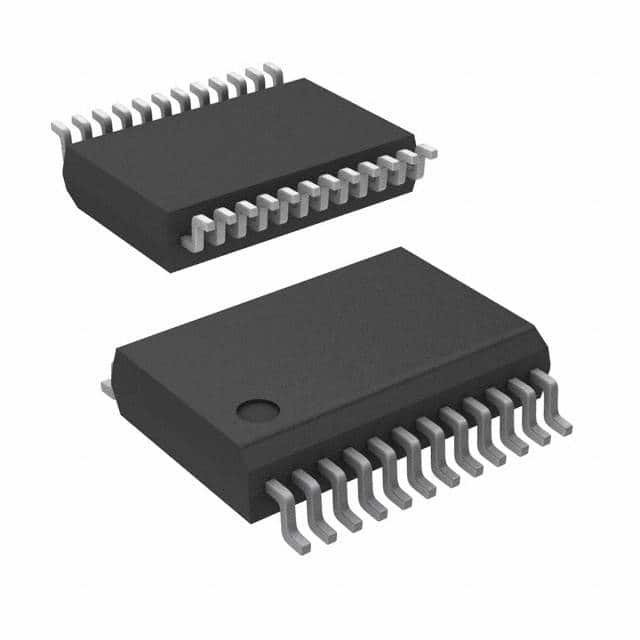Xem thông số kỹ thuật để biết chi tiết sản phẩm.

AD7853LARS
Product Overview
Category
AD7853LARS belongs to the category of analog-to-digital converters (ADCs).
Use
The AD7853LARS is primarily used for converting analog signals into digital data. It finds applications in various industries such as telecommunications, industrial automation, and medical equipment.
Characteristics
- High-resolution: The AD7853LARS offers a resolution of 12 bits, ensuring accurate conversion of analog signals.
- Fast conversion rate: With a maximum conversion rate of 1 MSPS (Mega Samples Per Second), it enables quick and efficient signal processing.
- Low power consumption: This ADC operates at low power, making it suitable for battery-powered devices.
- Wide input voltage range: The AD7853LARS can handle a wide range of input voltages, allowing flexibility in signal acquisition.
- Serial interface: It features a serial interface that simplifies integration with microcontrollers and other digital systems.
Package and Quantity
The AD7853LARS is available in a small outline integrated circuit (SOIC) package. Each package contains one unit of the ADC.
Specifications
- Resolution: 12 bits
- Conversion Rate: Up to 1 MSPS
- Input Voltage Range: ±10V
- Power Supply: +5V
- Interface: Serial (SPI/I2C)
Pin Configuration
The AD7853LARS has a total of 20 pins. Here is the detailed pin configuration:
- VREF-
- VREF+
- AGND
- VIN-
- VIN+
- DGND
- SCLK
- SDI
- CS
- RST
- SDO
- DOUT/DRDY
- NC
- NC
- NC
- NC
- NC
- NC
- VDD
- VIO
Functional Features
- High-resolution conversion: The AD7853LARS provides accurate 12-bit analog-to-digital conversion.
- Fast data acquisition: With a maximum conversion rate of 1 MSPS, it enables real-time signal processing.
- Low power consumption: This ADC operates at low power, making it suitable for energy-efficient applications.
- Flexible interface: The serial interface allows easy integration with microcontrollers and other digital systems.
- Wide input voltage range: The AD7853LARS can handle a wide range of input voltages, providing versatility in signal acquisition.
Advantages and Disadvantages
Advantages
- High resolution ensures precise conversion of analog signals.
- Fast conversion rate enables quick data acquisition.
- Low power consumption extends battery life in portable devices.
- Versatile input voltage range accommodates various signal levels.
- Serial interface simplifies integration with digital systems.
Disadvantages
- Limited to 12-bit resolution, which may not be sufficient for certain high-precision applications.
- Requires an external reference voltage source for accurate conversion.
Working Principles
The AD7853LARS operates based on the successive approximation register (SAR) architecture. It samples the analog input voltage and performs a series of comparisons to determine the digital representation of the signal. The internal circuitry converts the analog voltage into a binary code, which is then transmitted through the serial interface.
Application Field Plans
The AD7853LARS finds applications in various fields, including: 1. Telecommunications: Signal processing in communication systems, such as modems and routers. 2. Industrial Automation: Data acquisition and control systems in industrial machinery and processes. 3. Medical Equipment: Vital sign monitoring devices, patient monitoring systems, and medical imaging equipment.
Alternative Models
Here are some alternative models that offer similar functionality to the AD7853LARS: 1. AD7854LARS: 14-bit resolution ADC with similar characteristics and package. 2. AD7856LARS: 16-bit resolution ADC with comparable features and pin configuration. 3. AD7858LARS: 18-bit resolution ADC offering higher precision for demanding applications.
These alternative models provide options with varying resolutions to suit different requirements.
In conclusion, the AD7853LARS is a high-resolution analog-to-digital converter with fast conversion rate and low power consumption. Its versatile input voltage range and serial interface make it suitable for various applications in telecommunications, industrial automation, and medical equipment. While it has some limitations in terms of resolution and external reference voltage requirement, there are alternative models available to address specific needs.
Liệt kê 10 câu hỏi và câu trả lời thường gặp liên quan đến ứng dụng AD7853LARS trong giải pháp kỹ thuật
Sure! Here are 10 common questions and answers related to the application of AD7853LARS in technical solutions:
Q: What is the AD7853LARS? A: The AD7853LARS is a high-performance, 12-bit analog-to-digital converter (ADC) designed for various applications in industrial control systems, data acquisition, and instrumentation.
Q: What is the resolution of the AD7853LARS? A: The AD7853LARS has a resolution of 12 bits, which means it can convert an analog input voltage into a digital value with 4096 possible levels.
Q: What is the maximum sampling rate of the AD7853LARS? A: The AD7853LARS can sample at a maximum rate of 100 kilosamples per second (ksps), allowing for fast and accurate data acquisition.
Q: What is the input voltage range of the AD7853LARS? A: The AD7853LARS has a bipolar input voltage range of ±10V, making it suitable for both single-ended and differential input signals.
Q: Does the AD7853LARS require an external reference voltage? A: Yes, the AD7853LARS requires an external reference voltage for accurate conversion. It supports both internal and external reference options.
Q: Can the AD7853LARS operate in a low-power mode? A: Yes, the AD7853LARS features a power-down mode that reduces its power consumption when not actively converting analog signals.
Q: What is the interface used to communicate with the AD7853LARS? A: The AD7853LARS uses a serial peripheral interface (SPI) for communication with microcontrollers or other digital devices.
Q: Does the AD7853LARS provide any digital output options? A: Yes, the AD7853LARS provides both parallel and serial digital outputs, allowing for flexibility in connecting to different systems.
Q: Can the AD7853LARS handle simultaneous sampling of multiple channels? A: No, the AD7853LARS is a single-channel ADC, meaning it can only sample one analog input at a time. For multi-channel applications, multiple ADCs can be used.
Q: What are some typical applications of the AD7853LARS? A: The AD7853LARS is commonly used in applications such as process control, motor control, medical instrumentation, data loggers, and industrial automation where accurate analog-to-digital conversion is required.
Please note that these answers are general and may vary depending on specific implementation details and requirements.

